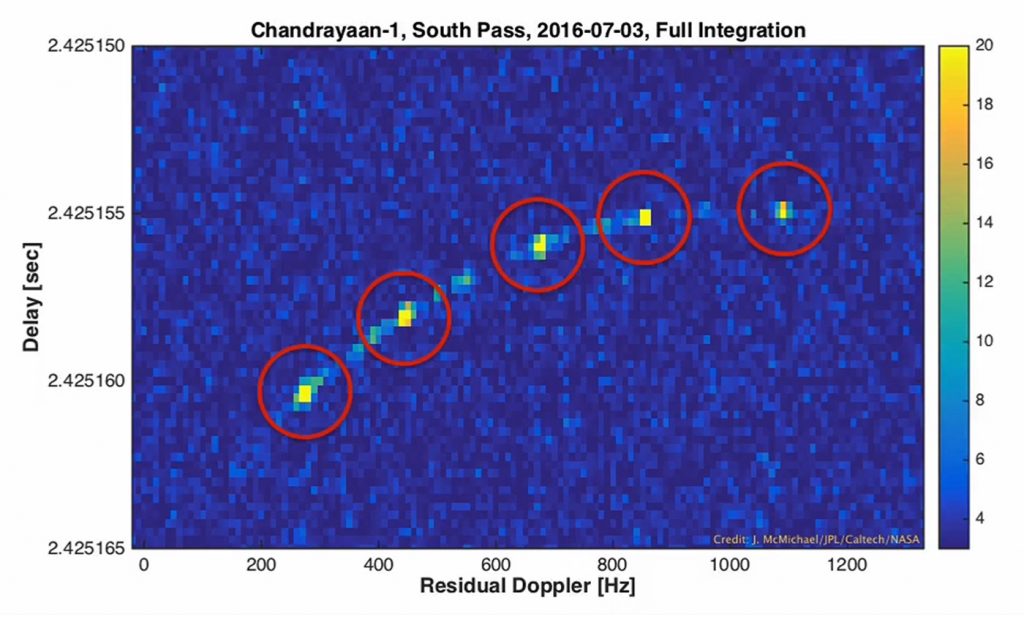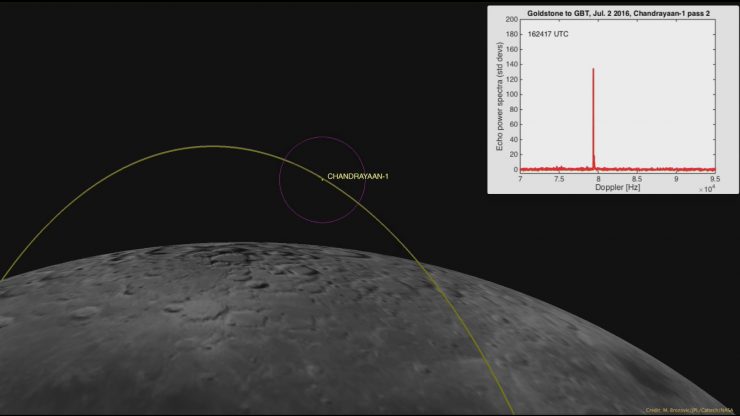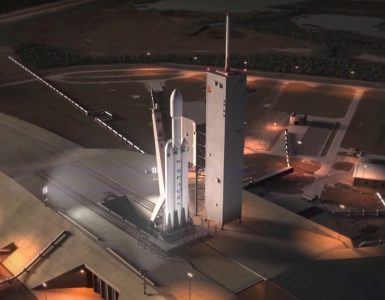Chandrayaan-1, India’s first unmanned spacecraft to moon was launched in 2008 at a cost of $79 million. It was an extremely small spacecraft, no bigger than a small car and its mission was to map the surface of the moon and survey it for precious resources. Though it was on a two year mission, Scientists in charge of it lost contact with it in 2009, August 29th 2009 was the last time the spacecraft was last in contact.
Now after eight years, NASA has located Chandrayaan-1 and it is still orbiting the moon. NASA has also located its own moon orbiter. This feat was achieved by using a new interplanetary radar technique developed by the Jet Propulsion Laboratory. NASA’s own Lunar Reconnaissance Orbiter (LRO) wasn’t hard to find as they had precise orbit data available. It was a much trickier job with Chandrayaan, as nobody knew where it is or even if it was still active, plus it is miniscule in size.

Radar imagery acquired of the Chandrayaan-1 spacecraft as it flew over the moon’s south pole on July 3, 2016. The imagery was acquired using NASA’s 70-meter (230-foot) antenna at the Goldstone Deep Space Communications Complex in California. This is one of four detections of Chandrayaan-1 from that day.
A beam of microwaves played a vital role in locating the spacecraft. The radar echoes bounced back were received by the Green Bank Telescope in West Virginia. The microwave beam was focused on the moon’s North Pole and the spacecraft passed it by multiple times over a period of three months. And NASA finally confirmed that it was indeed the lost spacecraft from India.
(Writing by Ananya Dutta; Editing by Mohith Agadi)





















